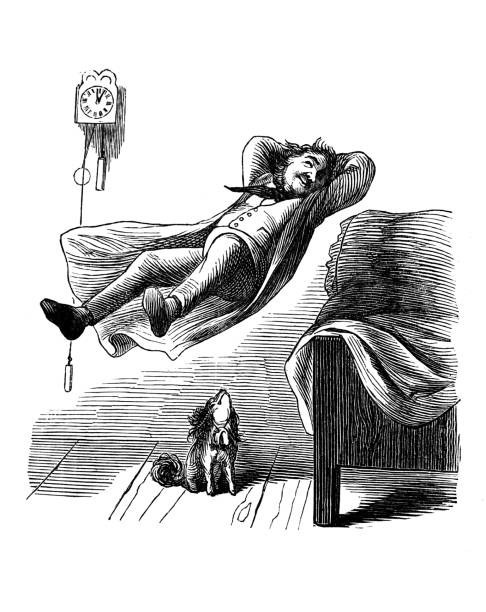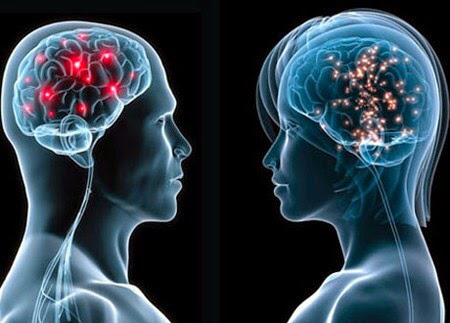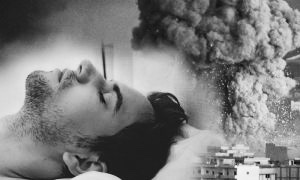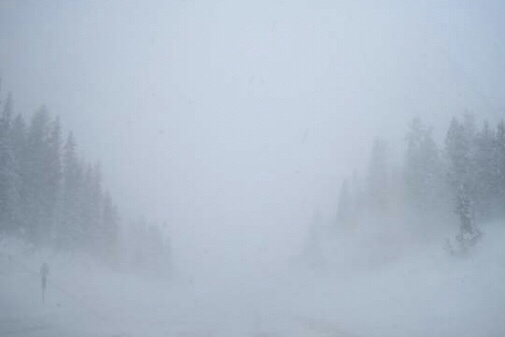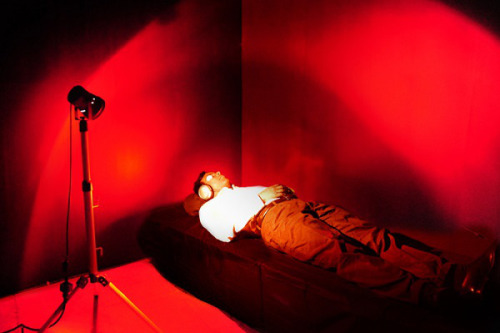Evaluation of evidence for Extrasensory Perception (ESP) - Dream Psi & Ganzfeld Research.
Extrasensory perception (ESP) is a term first coined by Joseph Banks Rhine in 1934 at Dukes University, North Carolina. It was used to describe an ability whereby information could be acquired without the use of the recognised human senses. The three main categories of ESP can be classed as; telepathy,(information is acquired from another person,) clairvoyance, (information from a distant event or object) and precognition (information concerning future events).
Although controversial and highly debated the work carried out by Rhine and his wife Louisa helped to lead ESP research away from the dark séance rooms of the 19th century mediums and into the scientific environment of the university laboratories. This shift in how ESP was investigated placed upon it the restrictions and principles of being conducted in a scientific manner, whereby in order for any claim or theory to be accepted and recognised by the scientific community, evidence is needed to be presented for examination and validation by its peers. The decades that followed on from Rhine’s first ESP experiments using card-guessing studies known as force-choice tests, many different approaches and methods have been designed to provide evidences that are more process-oriented. Departing from the constrictive methods of the force-choice test, researchers looked towards a new technique that aimed to examine ESP in a more dynamic and ecological validated assessment, that mirrors more closely to the reports of spontaneous ESP abilities, whereby the randomly selected target for a study had no predetermined range, (a picture, an object, a real-life scene or event), this is known as a free-response test.
Dream-Psi
Although controversial and highly debated the work carried out by Rhine and his wife Louisa helped to lead ESP research away from the dark séance rooms of the 19th century mediums and into the scientific environment of the university laboratories. This shift in how ESP was investigated placed upon it the restrictions and principles of being conducted in a scientific manner, whereby in order for any claim or theory to be accepted and recognised by the scientific community, evidence is needed to be presented for examination and validation by its peers. The decades that followed on from Rhine’s first ESP experiments using card-guessing studies known as force-choice tests, many different approaches and methods have been designed to provide evidences that are more process-oriented. Departing from the constrictive methods of the force-choice test, researchers looked towards a new technique that aimed to examine ESP in a more dynamic and ecological validated assessment, that mirrors more closely to the reports of spontaneous ESP abilities, whereby the randomly selected target for a study had no predetermined range, (a picture, an object, a real-life scene or event), this is known as a free-response test.
Dream-Psi
|
Throughout history altered states of consciousness (ASC) have been associated with paranormal abilities and experiences, such as trances induced by shamans and mediums in order for them to ‘commune’ with the spirits and see into the future, or masters of meditation claiming to have had out of body experiences and travel the astral planes. Unlike these states that can require training and discipline, there is one ASC that near enough every human being on the planet experiences; dreaming.
Exploring any connection between dreaming and paranormal processes (psi) such as ESP, Louisa Rhine of Duke University found that of the thousands of media reports of ESP experiences collected between 1930 and 1960 the majority (65%) were found to occur in dreams and were mainly precognitive in nature such as tragic incidents (Rhine, 1962). Although critics have claimed that a precognitive dream could be due to chance coincidence whereby major disasters (air crashes, earthquakes, etc.), happen regularly somewhere in the world and as billions of individuals are dreaming billions of dreams, the chance that someone, somewhere around the world not dreaming about the event would be surprising (Wiseman, 2011). Although some of Dr Rhine’s reports include unique details of events that could not be attributed to chance alone. |
The only problem for researchers interested in pursuing this phenomenon was their dependence on spontaneous recall from the individual the next morning, which could consist of the recall of just one dream per night, leading to a long and expensive study.
In 1953 a breakthrough was made within the psychological study of sleeping and dreaming, as two psychophysiologists, Eugene Aserinsky and Nathaniel Kleitman, discovered that certain periods of sleeps displayed by rapid eye movement (REM) was often accompanied by a dream phase that could be described by participant when woken near the end of these REM periods (Aserinsky and Kleitman, 1953). It was not until 1960 that psychiatrist Montague Ullman first used this research to explore the possibilities of the known spontaneous ESP phenomena of Dream-Psi (e.g. dream telepathy; a dream that involves information transfer from one individual (a sender) to another (a sleeping receiver) and dream precognition; where information of the future transferred into the dream).
Working at the Maimonides Medical Centre in New York, Ullman and colleagues designed a number of studies between 1966 and 1973 that explored the phenomena of telepathic dreams, (Ullman, Krippner & Feldstein, 1966; Krippner, 1969; Ullman & Krippner, 1970; Honorton, Krippner & Ullman, 1971; Krippner et al., 1971; Krippner, Honorton & Ullman, 1972) - 379 dream-psi sessions in total.
In 1953 a breakthrough was made within the psychological study of sleeping and dreaming, as two psychophysiologists, Eugene Aserinsky and Nathaniel Kleitman, discovered that certain periods of sleeps displayed by rapid eye movement (REM) was often accompanied by a dream phase that could be described by participant when woken near the end of these REM periods (Aserinsky and Kleitman, 1953). It was not until 1960 that psychiatrist Montague Ullman first used this research to explore the possibilities of the known spontaneous ESP phenomena of Dream-Psi (e.g. dream telepathy; a dream that involves information transfer from one individual (a sender) to another (a sleeping receiver) and dream precognition; where information of the future transferred into the dream).
Working at the Maimonides Medical Centre in New York, Ullman and colleagues designed a number of studies between 1966 and 1973 that explored the phenomena of telepathic dreams, (Ullman, Krippner & Feldstein, 1966; Krippner, 1969; Ullman & Krippner, 1970; Honorton, Krippner & Ullman, 1971; Krippner et al., 1971; Krippner, Honorton & Ullman, 1972) - 379 dream-psi sessions in total.
|
The first study conducted in 1966 involved having a sender and dreamer separated by distance and soundproof rooms, the dreamer had electrodes attached to their head in order for the researchers to monitor patterns of REM sleep and the room was equipped with a two way communication and recording system, so that researchers without entering the room could wake the dreamer and record their descriptions of their dream. The sender, before entering their room, would be handed a sealed and signed envelope that contained a random pictorial target, selected from a pool of famous works of art by a researcher assistant that night (using a set of dice and a random number table). Once inside the room the sender would be allowed to open the envelope and view the target picture, their instructions would be, once indicated to by the researcher via a loud buzzer, to try a send the image of the picture to the dreamer, (occurring 3 to 4 times during the night when the dreamer would enter REM sleep).
|
At the end of the study the recorded material from the dreamer would be transcribed by a second assistant and sent along with four pictures (the target and three non-targets) via the post to three independent judges. Blinded to the identification of the target, the judges working separately would have to evaluate the data given by the dreamer and try and rate (1 highest, 4 lowest) this to the pictures. Once done, their results would be sent again via the postal system back to the researchers for analysis.
An analysis conducted by Child (1985) of 83 sessions showed a significant outcome p = 1.7 x 10-6, and an effect size of .52. Utts (1988) examined 379 sessions were their findings indicted an 83.5% accuracy rate (50% expected by chance) and p < 4.0 x 10-6. Radin (1997) reviewed 450 sessions and calculated a 63% overall hit rate (50% expected by chance) and p = 1.3 x 10-8. Although evidence supplied by the Maimonides dream laboratories and the following independent analysis of Dream-psi, where the odds of chance accounting for the results being 1 in 1,000, one of the main criticism and problems to the data is that several other laboratories have not been able to replicate and validate the same effects. (Globus, Knap, Skinner and Healey, 1968, Belvedere and Foulkes, 1971, Van de Castle, 1977)
Due to this failure of replication, this in many critics eyes brought into question the validity of the work carried out at Maimonides. Arguments of ‘shoe fitting’ scoring (misinterpreting of events to fit into one’s expectations, (Romm, 1977) Fraud (Hansel, 1980), rejection due to lack of‘control groups’, (Alcock, 1981) and participant priming and procedure errors (Zusne and Jones, 1982) found their way into published articles and journals. Although many of the processes found in the studies conducted at the Maimonides dream laboratory contain many controls that carefully avoid these errors, simple misunderstanding by the critics of the design and processes of the studies or unquestionable disbelief in the topic (meaning researcher incompetents or deceitfulness), lead to these alterative explanations of the results. One constructive criticism that was raised concerned the handover of the statistical evaluation by the researchers to various consultants at different times and studies. Could they have had any influence on the choices of procedure and measurements that were used and in turn could this effect result outcome? Also questioned was the judges complete independence in rating the transcribes to target, e.g
An analysis conducted by Child (1985) of 83 sessions showed a significant outcome p = 1.7 x 10-6, and an effect size of .52. Utts (1988) examined 379 sessions were their findings indicted an 83.5% accuracy rate (50% expected by chance) and p < 4.0 x 10-6. Radin (1997) reviewed 450 sessions and calculated a 63% overall hit rate (50% expected by chance) and p = 1.3 x 10-8. Although evidence supplied by the Maimonides dream laboratories and the following independent analysis of Dream-psi, where the odds of chance accounting for the results being 1 in 1,000, one of the main criticism and problems to the data is that several other laboratories have not been able to replicate and validate the same effects. (Globus, Knap, Skinner and Healey, 1968, Belvedere and Foulkes, 1971, Van de Castle, 1977)
Due to this failure of replication, this in many critics eyes brought into question the validity of the work carried out at Maimonides. Arguments of ‘shoe fitting’ scoring (misinterpreting of events to fit into one’s expectations, (Romm, 1977) Fraud (Hansel, 1980), rejection due to lack of‘control groups’, (Alcock, 1981) and participant priming and procedure errors (Zusne and Jones, 1982) found their way into published articles and journals. Although many of the processes found in the studies conducted at the Maimonides dream laboratory contain many controls that carefully avoid these errors, simple misunderstanding by the critics of the design and processes of the studies or unquestionable disbelief in the topic (meaning researcher incompetents or deceitfulness), lead to these alterative explanations of the results. One constructive criticism that was raised concerned the handover of the statistical evaluation by the researchers to various consultants at different times and studies. Could they have had any influence on the choices of procedure and measurements that were used and in turn could this effect result outcome? Also questioned was the judges complete independence in rating the transcribes to target, e.g
|
where one dreamer’s description is so similar to the target that the judge can easily recognise a correct hit, is this then the description standard level that the judge will uses in following ratings. (Child, 1985)
Although supporters and critics of Dream-psi may continue to argue over the evidence produced from the Maimonides research, its debate within the scientific community will allow this phenomenon to remain a highlight of interest, and hopefully encourage future investigations. |
Following on from the studies conducted on Dream-psi, several lines of evidence suggested a theory that psi information could be transferred as a very weak signal that could be easily masked by normal external sensory and internal somatic ‘noise’ and that if there was a way of reducing this noise input and increasing a state that was shown to be psi-conducive, this would enhance an individual’s abilities in detecting the psi signal. (Honorton, 1969, 1977) With this theory in mind researchers again looked towards different altered states of consciousness as the psi facilitator.
Ganzfeld Procedure
|
Research examining the effects reported by arctic explorers of hallucinations and experiencing an altered state of mind when exposed to short periods of featureless landscape of white snow, found that if the brain was deprived of external stimuli or subjected to a homogeneous perceived environment, it will amplify neural noise that could generate hallucinations and a different state of consciousness, known as the ganzfeld effect. (Metzger, 1930) It was this effect that researchers used to examined the weak signal theory and if the reduction of sensory noise could facilitate psi performance. (Honorton and Harper, 1974, Parker, 1975. |
Similar to the dream studies, the ganzfeld procedure tested for telepathic communication by way of using a sender and a receiver. The receiver, seated in a comfortable reclining chair in a soundproof room equipped with a recording system, would have headphones on with white noise being played they would also have a translucent ping-pong ball that has been halved and taped over their eyes, then a red light would be placed directly over the participant. This environment would create an indifferent audio and visual field inducing the ganzfeld effect and reducing external sensory input. To decrease internal somatic input the participant would first undergo relaxation exercises via tapes at the beginning of the test. The sender, once isolated in a separate soundproof room, would be given a randomly selected target from the pool; this could be either a static target such as a print or photograph or a dynamic target, such as a clip from a videotape.
On commencement of the test the sender would be asked to concentrate on the target while the receiver would give a verbal account of what they were experiencing and imagining. This would last for round 30 minutes. At the end of the test the target-experience scores would be rated, this could be done either with the receiver being presented with four potential targets stimuli (only one being the correct target) and asked to rate which one matched their experience, or external judges could be employed to rate a transcript of the receivers verbal account and the four target stimuli (1 highest, 4 lowest). If the target is rated the highest out of the four stimuli this is classed as a‘hit’ (whereby chance hit rate would be 25%).
On commencement of the test the sender would be asked to concentrate on the target while the receiver would give a verbal account of what they were experiencing and imagining. This would last for round 30 minutes. At the end of the test the target-experience scores would be rated, this could be done either with the receiver being presented with four potential targets stimuli (only one being the correct target) and asked to rate which one matched their experience, or external judges could be employed to rate a transcript of the receivers verbal account and the four target stimuli (1 highest, 4 lowest). If the target is rated the highest out of the four stimuli this is classed as a‘hit’ (whereby chance hit rate would be 25%).
|
From an assessment carried by Honorton (1977) of 42 studies in 10 different laboratories using the ganzfeld procedure, 23 had produce significant results of ESP performance, equalling a 55% success rate. Analysis by Bem and Honorton, (1994) who reviewed 28 studies conducted between 1983 and 1989, confirmed a hit rate of 35% (p<109).
The evidence put forward from these studies shows that the ganzfeld procedure is highly replicable and can produce strong statistical support for the weak signal theory. (Storm and Ertel, 2001; Carpenter, 2005) Due to this success the ganzfeld procedure has been at the centre of many heated debates. |
Once critic of Honorton’s 55% success rate was Ray Hyman (1985), describing in his own report of the 42 studies that, due to procedural flaws such as inadequate randomization and sensory leakage and bias in reporting (file-drawer problem; whereby successful studies are likely to be published, leaving an unknown number of unsuccessful studies in the file-draw, this if included in the analysis could reduce or cancel out an overall significant result). Hyman therefore argues that the actual success rate would be 30%, and that this would be too weak a result to support the existence of psi.
In response to this criticism, Bem (1994) argued that on the issue of randomisation, that it was less important when related to the ganzfeld procedure due to the participant only taking part in one trial. On producing evidence to support this comment, he provided an empirical cross-check of content and sequence likelihood, and his results produced a negative result. For the sensory leakage debate (e.g. smudges or marks on the target martial when offered to the receiver for their rating, or if the researcher who interacted with the receiver knew the identity of the target) only one study from Honorton’s research was found to contain this flaw, and if discarded the result would still be highly significant. As for selective reporting using the Rosenthal (1979) file drawer statistic, it would need to take 423 unsuccessful studies to cancel out the significant result. (Hyman and Honorton, 1986)
From this heated debate over the results of the ganzfeld studies Hyman and Honorton (1986) contributed to a joint communiqué stating that they both agreed in the overall significant effect in the database and that it cannot be explained by selective reporting or multiple analyses, but they continued to disagree over how the effect constitutes evidence for psi. Further investigations that include more stringent standards are needed.
When looking at the evidence of extrasensory perception in dream and ganzfeld research, both methods have been able to produce positive results that support not only its existence, but may also provide a glimpse into its processes and maybe its catalysts. From gaining knowledge of how altered states of consciousness may facilitate psi to encouraging further research into how difference personality factors such as belief or creativity can influence ESP performance. Although critics will always be a common companion, as with any other scientific topic, it is the debate over the evidence that will continue, and hopefully inspire further knowledge.
In response to this criticism, Bem (1994) argued that on the issue of randomisation, that it was less important when related to the ganzfeld procedure due to the participant only taking part in one trial. On producing evidence to support this comment, he provided an empirical cross-check of content and sequence likelihood, and his results produced a negative result. For the sensory leakage debate (e.g. smudges or marks on the target martial when offered to the receiver for their rating, or if the researcher who interacted with the receiver knew the identity of the target) only one study from Honorton’s research was found to contain this flaw, and if discarded the result would still be highly significant. As for selective reporting using the Rosenthal (1979) file drawer statistic, it would need to take 423 unsuccessful studies to cancel out the significant result. (Hyman and Honorton, 1986)
From this heated debate over the results of the ganzfeld studies Hyman and Honorton (1986) contributed to a joint communiqué stating that they both agreed in the overall significant effect in the database and that it cannot be explained by selective reporting or multiple analyses, but they continued to disagree over how the effect constitutes evidence for psi. Further investigations that include more stringent standards are needed.
When looking at the evidence of extrasensory perception in dream and ganzfeld research, both methods have been able to produce positive results that support not only its existence, but may also provide a glimpse into its processes and maybe its catalysts. From gaining knowledge of how altered states of consciousness may facilitate psi to encouraging further research into how difference personality factors such as belief or creativity can influence ESP performance. Although critics will always be a common companion, as with any other scientific topic, it is the debate over the evidence that will continue, and hopefully inspire further knowledge.
References
Alcock, J. E. (1981). Parapsychology, science or magic? A psychological perspective. New York: Pergamon Press
Aserinsky, E. and Kleitman, N. (1953). Regularly occurring periods of eye motility and concurrent phenomena during sleep. Science, 118, 273-274
Belvedere, E. and Foulkes, D. (1971). Telepathy and dreams: A failure to replicate. Perceptual and Motor Skills, 33, 783-789
Bem, D. J. and Honorton, C. (1994). Does psi exist? Replicable evidence for an anomalous process of information transfer. Psychological Bulletin, 115, 4-18
Carpenter, J.C. (2005). Implicit measures of participants’ experiences in the ganzfeld: Confirmation of previous relationships in a new sample. Proceedings of Presented Papers: The Parapsychological Association 48th Annual Convention, 36-45.
Child, I.L. (1985). Psychology and anomalous observations: The question of ESP in dreams. American Psychologist, 40, 1219-123
Globus, G., Knap, P., Skinner, J. and Healey, J. (1968) An Appraisal of telepathic communication in dreams. Psychophysiology, Vol 4(3), 1968, 365.
Hansel, C. E. M. (1980). ESP and parapsychology: A critical re-evaluation. Buffalo, NY: Prometheus Books.
Honorton, C. (1969). Relationship between EEG alpha activity and ESP card-guessing performance. Journal of the American Society for Psychical Research, 63, 365-374
Honorton, C. Krippner, S. and Ullman, M. (1971). Telepathic transmission of art prints under two conditions. Proceedings of the 80th annual convention of the American Psychological Association, pp. 319320
Honorton, C. and Harper, S. (1974). Psi-mediated imagery and ideation in an experimental produce for regulating perceptual input. Journal of the American Society for Psychical Research, 68, 156-168
Honorton, C. (1977). Psi and internal attention states. In B.B. Wolman (Ed.), Handbook of parapsychology (pp. 435-472). New York: Van Nostran Reinhold
Hyman, R. (1985). The ganzfeld psi experiment: A critical appraisal. Journal of Parapsychology, 49, 3-49
Hyman, R. and Honorton, C. (1986). A joint communiqué: The psi ganzfeld controversy. Journal of Parapsychology, 50, 351-364
Krippner, S. (1969). Investigations of "extra-sensory" phenomena in dreams and other altered states of consciousness. Journal of the American Society of Psychosomatic Dentistry and Medicine, 16, 7-14.
Krippner, S., Ullman, M., & Honorton, C. (1971). A precognitive dream study with a single subject. Journal of the American Society for Psychical Research, 65, 192-203.
Krippner, S., Honorton, C., & Ullman, M. (1972). A second precognitive dream study with Malcolm Bessent. Journal of the American Society for Psychical Research, 66, 269-279.
Metzger, W. (1930). Optische Untersuchungen am Ganzfeld: II. Zur phanomenologie des homogenen Ganzfeld [Optical investigation of the Ganzfeld: II Towards the phenomenology of the homogeneous Ganzfeld]. Psychologistche Forschung, 13, 6-29
Parker, A. (1975). Some finding relevant to the change in state hypothesis. In J.D. Morris, W. G. Roll, and R. L. Morris (Eds.), Research in parapsychology, 1974 (pp. 40-42). Metuchen, NJ: Scarecrow Press
Radin, D. I. (1997) Unconscious perception of future emotions: An experiment in presentiment. Journal of Scientific\exploration, 11, 163-180
Rhine, J. B. (1934). Extra-sensory perception. Boston: Boston Society for Psychic Research.
Rhine, L.E. (1962). Psychological processes in ESP experiences. I. Waking experiences. Journal of Parapsychology, 26, 88-111
Romm, E. G. (1977). When you give a closet occultist a Ph.D., what kind of research can you expect? Humanist, 37(3), 12-15
Rosenthal, R. (1979). The “file drawer problem” and tolerance for null results. Psychological Bulletin, 86, 638-641
Storm, L. and Ertel, S. (2001). Does psi exist? Comments on Milton and Wiseman’s (1999) meta-analysis of ganzfeld research. Psychological Bulletin, 127, 424-433
Ullman, M., Krippner, S. and Feldstein, S (1966). Experimentally induced telepathic dreams: Two studies using EEG-REM monitoring technique. Int. J. Neuropsychiat. 2, 420
Ullman, M. and Krippner, S. (1970). Dream studies and telepathy. Parapsychological Monographs, No 12. New York: Parapsychology Foundation
Utts, J. M. (1988). Successful replication vs. statistical significance. JP, 52, 305-320
Van de Castle, R. L. (1977). Sleep and dreams. In B. Wolman (Ed.) Handbook of parapsychology (pp. 473-499). New York: Van Nostrand Reinhold
Wiseman, R. (2011). Paranormality: Why We See What Isn't There. Macmillan
Zusne, L. and Jones, W. H. (1982) Anomalistic psychology: A study of extraordinary phenomena of behavior and experience. Hillsdale, NJ: Lawrence Erlbaum Associates.
Alcock, J. E. (1981). Parapsychology, science or magic? A psychological perspective. New York: Pergamon Press
Aserinsky, E. and Kleitman, N. (1953). Regularly occurring periods of eye motility and concurrent phenomena during sleep. Science, 118, 273-274
Belvedere, E. and Foulkes, D. (1971). Telepathy and dreams: A failure to replicate. Perceptual and Motor Skills, 33, 783-789
Bem, D. J. and Honorton, C. (1994). Does psi exist? Replicable evidence for an anomalous process of information transfer. Psychological Bulletin, 115, 4-18
Carpenter, J.C. (2005). Implicit measures of participants’ experiences in the ganzfeld: Confirmation of previous relationships in a new sample. Proceedings of Presented Papers: The Parapsychological Association 48th Annual Convention, 36-45.
Child, I.L. (1985). Psychology and anomalous observations: The question of ESP in dreams. American Psychologist, 40, 1219-123
Globus, G., Knap, P., Skinner, J. and Healey, J. (1968) An Appraisal of telepathic communication in dreams. Psychophysiology, Vol 4(3), 1968, 365.
Hansel, C. E. M. (1980). ESP and parapsychology: A critical re-evaluation. Buffalo, NY: Prometheus Books.
Honorton, C. (1969). Relationship between EEG alpha activity and ESP card-guessing performance. Journal of the American Society for Psychical Research, 63, 365-374
Honorton, C. Krippner, S. and Ullman, M. (1971). Telepathic transmission of art prints under two conditions. Proceedings of the 80th annual convention of the American Psychological Association, pp. 319320
Honorton, C. and Harper, S. (1974). Psi-mediated imagery and ideation in an experimental produce for regulating perceptual input. Journal of the American Society for Psychical Research, 68, 156-168
Honorton, C. (1977). Psi and internal attention states. In B.B. Wolman (Ed.), Handbook of parapsychology (pp. 435-472). New York: Van Nostran Reinhold
Hyman, R. (1985). The ganzfeld psi experiment: A critical appraisal. Journal of Parapsychology, 49, 3-49
Hyman, R. and Honorton, C. (1986). A joint communiqué: The psi ganzfeld controversy. Journal of Parapsychology, 50, 351-364
Krippner, S. (1969). Investigations of "extra-sensory" phenomena in dreams and other altered states of consciousness. Journal of the American Society of Psychosomatic Dentistry and Medicine, 16, 7-14.
Krippner, S., Ullman, M., & Honorton, C. (1971). A precognitive dream study with a single subject. Journal of the American Society for Psychical Research, 65, 192-203.
Krippner, S., Honorton, C., & Ullman, M. (1972). A second precognitive dream study with Malcolm Bessent. Journal of the American Society for Psychical Research, 66, 269-279.
Metzger, W. (1930). Optische Untersuchungen am Ganzfeld: II. Zur phanomenologie des homogenen Ganzfeld [Optical investigation of the Ganzfeld: II Towards the phenomenology of the homogeneous Ganzfeld]. Psychologistche Forschung, 13, 6-29
Parker, A. (1975). Some finding relevant to the change in state hypothesis. In J.D. Morris, W. G. Roll, and R. L. Morris (Eds.), Research in parapsychology, 1974 (pp. 40-42). Metuchen, NJ: Scarecrow Press
Radin, D. I. (1997) Unconscious perception of future emotions: An experiment in presentiment. Journal of Scientific\exploration, 11, 163-180
Rhine, J. B. (1934). Extra-sensory perception. Boston: Boston Society for Psychic Research.
Rhine, L.E. (1962). Psychological processes in ESP experiences. I. Waking experiences. Journal of Parapsychology, 26, 88-111
Romm, E. G. (1977). When you give a closet occultist a Ph.D., what kind of research can you expect? Humanist, 37(3), 12-15
Rosenthal, R. (1979). The “file drawer problem” and tolerance for null results. Psychological Bulletin, 86, 638-641
Storm, L. and Ertel, S. (2001). Does psi exist? Comments on Milton and Wiseman’s (1999) meta-analysis of ganzfeld research. Psychological Bulletin, 127, 424-433
Ullman, M., Krippner, S. and Feldstein, S (1966). Experimentally induced telepathic dreams: Two studies using EEG-REM monitoring technique. Int. J. Neuropsychiat. 2, 420
Ullman, M. and Krippner, S. (1970). Dream studies and telepathy. Parapsychological Monographs, No 12. New York: Parapsychology Foundation
Utts, J. M. (1988). Successful replication vs. statistical significance. JP, 52, 305-320
Van de Castle, R. L. (1977). Sleep and dreams. In B. Wolman (Ed.) Handbook of parapsychology (pp. 473-499). New York: Van Nostrand Reinhold
Wiseman, R. (2011). Paranormality: Why We See What Isn't There. Macmillan
Zusne, L. and Jones, W. H. (1982) Anomalistic psychology: A study of extraordinary phenomena of behavior and experience. Hillsdale, NJ: Lawrence Erlbaum Associates.


